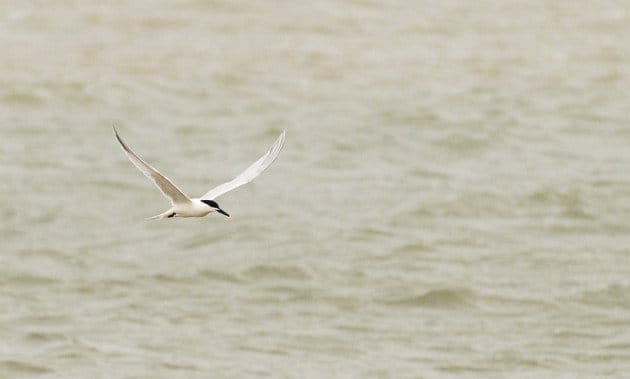
The first batch of proposals for the 2013 American Ornithologists’ Union North American checklist supplement has hit the ‘tubes. Let’s take a look at some of what lurks inside:
Pygmy-owl split
Proposal 2013-A-2 would split the “Guatemalan Pygmy-Owl” (Glaucidium cobanense) of southern Mexico and northern Central America from the widespread Northern Pygmy-Owl (G. gnoma) on the basis of vocal differences and a discrete range.
Sandwich Tern split
New World populations of the widely distributed Sandwich Tern (Thalasseus sandvicensis) are treated by some authorities (including the British Ornithologists’ Union) as a distinct species: Cabot’s Tern (T. acuflavida). Proposal 2013-A-3 recommends adopting that split on the basis of a 2009 study (I wrote about it back in the day here).
Moving Hawaiian honeycreepers
Proposal 2013-A-5 would remove the Hawaiian honeycreepers out of their own subfamily (Drepanidinae) and place them in the subfamily Carduelinae near the rosefinches, which a 2011 study showed to be their closest relatives. This change has been needed and tracks with our best understanding of finch relationships.
Shearwater split
Proposal 2013-A-6 would split the shearwater taxon baroli, which breeds on several Atlantic island groups (the Azores, Canaries, Selvages, and Madeira) and strays to North American waters, from its current position as part of the Little Shearwater (Puffinus assimilis) complex. It could either get full-species status (as Barolo Shearwater or Macaronesian Shearwater), or it could be considered a subspecies of Audubon’s Shearwater (P. lherminieri).
Sandpiper shuffle
We wrote about a sandpiper family reorganization last fall; Proposal 2013-A-7 seeks to address some of those changes, but unfortunately (I think) from the most problematic part of of the sandpiper family tree, and I fear that this proposal may be doomed, and the chance for a higher-level reorganization could be kicked down the road, unless another proposal is submitted for consideration.

Ruddy Turnstones, Sanderling, and Purple Sandpiper © David J. Ringer
Sage Sparrow split
Proposal 2013-A-7 would split the Sage Sparrow (Amphispiza belli) into two species: Great Basin Sage Sparrow (A. nevadensis) and California Sage Sparrow (A. belli). (Let the hyphen wars begin!) The proposal author (a Sage Sparrow researcher) argues that multiple factors indicate the birds deserve full species status.
And more…
Proposals 9-13 also concern systematic revisions, including another generic revision for Flammulated Owl (which apparently isn’t as close to Old World Otus owls as previously thought) and a convoluted, somewhat entertaining proposal related the Canada Goose complex. Perhaps we’ll look a bit deeper at some of those proposals next time.
So what do you think? What’s looking interesting, likely, or doomed from this list? And what do you hope makes it in front of the committee before this year’s supplement is issued?













I hope someone submits a proposal with better names for those Sage Sparrows! You would think they would have learned from the Sharp-tailed Sparrow split, where they went back 14(?) years later and changed both names because the originals were too cumbersome.
Isn’t it strange that almost every change in nomenclature these days is a split. Once upon a time, lumping was popular. Are we just looking at scientific trendiness here?
Now a plea, because even though I trained in genetics, I am not enough of a molecular biologist to understand all the ins and outs of this. Would someone please explain how comparing DNA sequences between two populations can define whether they are
reproductively isolated or not, when the DNA used is always mitochondrial DNA. Mitochondrial DNA is passed ONLY from the mother to the offsping. There is no paternal information there at all. A female from one group could be screwing around with a whole lot of males from another population (on a common wintering ground, for example), and no biologist looking at the mitochondrial DNA of the offspring would ever know. This is no way to define reproductively isolated groups, an absolute necessity to call something a species. What am I missing here?